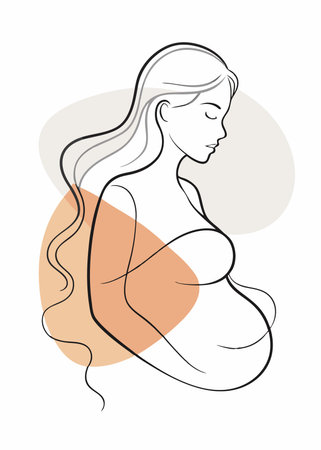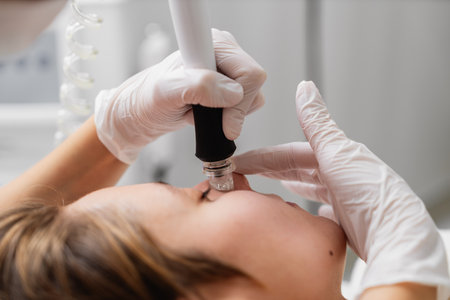1. Introduction to Laser Skin Resurfacing
Laser skin resurfacing is a popular cosmetic procedure designed to improve the overall appearance of the skin by reducing wrinkles, scars, and uneven skin tone. Whether youre dealing with fine lines, acne scars, or sun damage, laser treatments can help rejuvenate your skin and restore a more youthful look.
How Does Laser Skin Resurfacing Work?
Laser skin resurfacing uses concentrated beams of light to remove damaged skin layers while stimulating collagen production. This process encourages new skin cell growth, leading to smoother and firmer skin over time.
Benefits of Laser Skin Resurfacing
- Improves skin texture: Helps smooth out rough patches and fine lines.
- Evens out skin tone: Reduces hyperpigmentation, redness, and sunspots.
- Reduces scars: Minimizes the appearance of acne scars and other blemishes.
- Boosts collagen production: Encourages natural skin regeneration for long-term benefits.
Fractional vs. Ablative Laser Resurfacing: What’s the Difference?
When considering laser resurfacing, its important to understand the difference between fractional and ablative treatments. The table below provides a quick comparison of these two techniques:
| Treatment Type | Description | Recovery Time | Best For |
|---|---|---|---|
| Fractional Laser | Treats microscopic sections of skin, leaving surrounding areas intact for faster healing. | A few days to one week | Mild to moderate wrinkles, sun damage, and acne scars |
| Ablative Laser | Removes entire outer layers of damaged skin for more dramatic results. | A few weeks | Deep wrinkles, severe sun damage, and significant scarring |
Is Laser Skin Resurfacing Right for You?
If youre looking for a way to refresh your skin and address concerns like aging signs or discoloration, laser resurfacing may be a great option. However, choosing between fractional and ablative lasers depends on your specific needs, recovery time preferences, and desired results.
2. What Is Fractional Laser Resurfacing?
Fractional laser resurfacing is a popular cosmetic treatment designed to improve skin texture, tone, and overall appearance. Unlike traditional ablative lasers that remove the entire top layer of skin, fractional lasers create microscopic columns of controlled damage while leaving surrounding tissue intact. This approach promotes faster healing and collagen production.
How Do Fractional Lasers Work?
Fractional lasers use a grid-like pattern to deliver laser energy into the skin. These tiny thermal injuries trigger the bodys natural healing response, stimulating new collagen and elastin production. Because only a fraction of the skin is treated at a time, recovery is quicker compared to fully ablative treatments.
Benefits of Fractional Laser Resurfacing
Fractional lasers offer several benefits, making them an excellent choice for those looking to enhance their skin without extensive downtime.
- Reduced Downtime: Since only part of the skin is affected, healing is faster than with ablative treatments.
- Improved Skin Texture: Helps smooth fine lines, wrinkles, and acne scars.
- Even Skin Tone: Reduces pigmentation issues like sunspots and melasma.
- Collagen Stimulation: Encourages long-term skin rejuvenation.
- Customizable Treatment: Can be adjusted for different skin concerns and depths.
Who Is an Ideal Candidate?
Fractional laser resurfacing is suitable for many individuals looking to enhance their complexion without undergoing aggressive procedures. It’s ideal for:
- People with mild to moderate wrinkles or fine lines.
- Those struggling with acne scars or uneven skin texture.
- Individuals with sun damage or hyperpigmentation.
- Patients who want noticeable results with minimal recovery time.
Common Treatment Areas
This treatment can be used on various areas of the body to address different skin concerns. Below is a breakdown of common treatment zones:
| Treatment Area | Common Concerns Treated |
|---|---|
| Face | Wrinkles, fine lines, acne scars, hyperpigmentation |
| Neck | Aging signs, loose skin, uneven tone |
| Chest | Sun damage, discoloration, fine lines |
| Hands | Age spots, rough texture, wrinkles |
| Back | Acne scars, uneven skin tone |
If youre considering fractional laser resurfacing, consulting with a qualified provider can help determine if it’s the right option for your specific skin needs.

3. What Is Ablative Laser Resurfacing?
Ablative laser resurfacing is one of the most powerful treatments for skin rejuvenation. It works by removing the outer layers of damaged skin, allowing new, healthier skin to regenerate. This type of laser treatment is highly effective for improving deep wrinkles, scars, uneven skin texture, and other significant skin concerns.
How Does Ablative Laser Resurfacing Work?
Ablative lasers use high-energy beams to precisely remove layers of skin. As the treated area heals, collagen production increases, leading to firmer, smoother skin. While this method delivers dramatic results, it also comes with a longer recovery time compared to non-ablative or fractional lasers.
Types of Ablative Lasers
There are two main types of ablative lasers commonly used in skin resurfacing:
| Type | Description | Best For |
|---|---|---|
| CO2 Laser | A more aggressive laser that removes deeper layers of skin and stimulates collagen production. | Deep wrinkles, acne scars, sun damage |
| Erbium Laser | A gentler option that targets surface-level imperfections while causing less heat damage. | Mild to moderate wrinkles, pigmentation issues |
The Intensity and Effectiveness of Ablative Lasers
Ablative lasers provide some of the most noticeable improvements in skin texture and tone. Because they remove layers of skin, they effectively reduce deep-set wrinkles and scars that other treatments may not fully address. However, this intensity also means a longer healing process.
Downtime and Recovery
The recovery period for ablative laser resurfacing varies depending on the depth of treatment. Generally, you can expect:
- Mild Treatments: About one week of redness and peeling.
- Deeper Treatments: Up to two weeks of downtime with significant redness and swelling.
- Total Healing Time: Skin continues to improve for several months as collagen rebuilds.
Who Is a Good Candidate for Ablative Laser Resurfacing?
This treatment is ideal for individuals who have significant skin concerns such as deep wrinkles, acne scars, or severe sun damage. It’s best suited for those who can commit to the necessary downtime and follow post-treatment care instructions carefully.
Ablative vs. Fractional Lasers: A Quick Comparison
| Treatment Type | Effectiveness | Downtime | Main Benefits |
|---|---|---|---|
| Ablative Lasers | High – Removes layers of damaged skin for dramatic results | Mild to long (1-2 weeks) | Smooths deep wrinkles, improves scars and sun damage |
| Fractional Lasers | Moderate – Targets specific areas while leaving surrounding skin intact | Mild (a few days) | Smoother skin with less recovery time than ablative lasers |
If youre considering ablative laser resurfacing, its essential to consult with a qualified provider to determine if its the right option based on your skin type and goals.
4. Comparing Fractional and Ablative Laser Treatments
When deciding between fractional and ablative laser skin resurfacing, it’s important to compare their recovery time, effectiveness, risks, and ideal skin types. Below is a side-by-side comparison to help you determine which treatment might be best for your skin concerns.
Recovery Time
Recovery time varies significantly between these two treatments. Fractional lasers typically have a shorter downtime, while ablative lasers require a more extended healing period.
| Treatment Type | Recovery Time |
|---|---|
| Fractional Laser | A few days to a week |
| Ablative Laser | 1 to 3 weeks |
Effectiveness
The effectiveness of each treatment depends on the severity of skin concerns. Fractional lasers are great for mild to moderate issues, while ablative lasers provide dramatic results for deeper wrinkles and scars.
| Treatment Type | Effectiveness |
|---|---|
| Fractional Laser | Mild to moderate improvement in skin tone and texture |
| Ablative Laser | Dramatic improvement for deep wrinkles and scars |
Risks and Side Effects
Both treatments come with potential risks, but ablative lasers tend to have a higher chance of complications due to their intensity.
| Treatment Type | Common Risks & Side Effects |
|---|---|
| Fractional Laser | Mild redness, swelling, slight peeling |
| Ablative Laser | Sensitivity, prolonged redness, risk of infection or pigmentation changes |
Ideal Skin Types
Your skin type plays a big role in determining which laser treatment is best for you. Those with lighter skin tones generally tolerate both treatments well, while individuals with darker skin tones may need to proceed with caution.
| Treatment Type | Best Suited For |
|---|---|
| Fractional Laser | Mild to moderate wrinkles, sun damage, acne scars; suitable for most skin types including some darker tones |
| Ablative Laser | Mature skin with deep wrinkles or significant scarring; best for fair to medium skin tones due to risk of pigmentation changes in darker skin |
The Bottom Line on Choosing the Right Treatment
If you’re looking for a less invasive option with minimal downtime, fractional laser treatments may be the right choice. However, if you want dramatic improvements and can handle longer recovery times, an ablative laser might be worth considering. Always consult with a qualified dermatologist or skincare professional before making a decision.
5. Choosing the Right Treatment for You
Selecting between fractional and ablative laser skin resurfacing depends on your skin concerns, lifestyle, and aesthetic goals. Each treatment offers unique benefits, so understanding how they fit into your personal needs is key to making the best choice.
Assessing Your Skin Concerns
The first step in deciding which laser treatment is right for you is identifying your primary skin issues. Here’s a quick comparison:
| Skin Concern | Best Laser Option |
|---|---|
| Fine lines & mild wrinkles | Fractional laser |
| Deep wrinkles & severe sun damage | Ablative laser |
| Mild acne scars & uneven texture | Fractional laser |
| Deep acne scars & significant texture issues | Ablative laser |
| Pigmentation & age spots | Both (depending on severity) |
Lifestyle Considerations
Your daily routine and downtime availability play a big role in choosing the right treatment. Fractional lasers offer a quicker recovery, making them ideal for those with busy schedules. Ablative lasers require more downtime but provide dramatic results.
| Lifestyle Factor | Best Fit |
|---|---|
| No time for extended recovery | Fractional laser |
| Able to take time off for healing | Ablative laser |
| Mild improvements over multiple sessions are fine | Fractional laser |
| I want the most dramatic results in one session | Ablative laser |
| Sensitive skin prone to irritation | Fractional laser (gentler approach) |
| I’m okay with temporary redness and peeling for better results | Ablative laser |
Your Aesthetic Goals Matter
If youre looking for subtle improvements over time, fractional lasers may be ideal. If you want a more dramatic transformation and are willing to handle the downtime, ablative lasers can deliver powerful results.
A Few Key Questions to Ask Yourself:
- “How much downtime can I realistically manage?” If you cant afford a long recovery period, fractional lasers are the better option.
- “Do I need major correction or just minor refinements?” Ablative lasers work best for deep wrinkles and scarring, while fractional lasers help with milder concerns.
- “Am I comfortable with multiple sessions or do I prefer one strong treatment?” If you prefer gradual progress, go fractional. If you want faster, more noticeable changes, ablative might be the way to go.
- “What does my dermatologist recommend?” A professional consultation will help you determine the safest and most effective option based on your skin type.
The Bottom Line: Personalization is Key
The best laser resurfacing treatment depends on your individual needs. Whether you choose fractional or ablative lasers, consulting with a qualified provider will ensure that your treatment plan aligns with your lifestyle and aesthetic aspirations.


